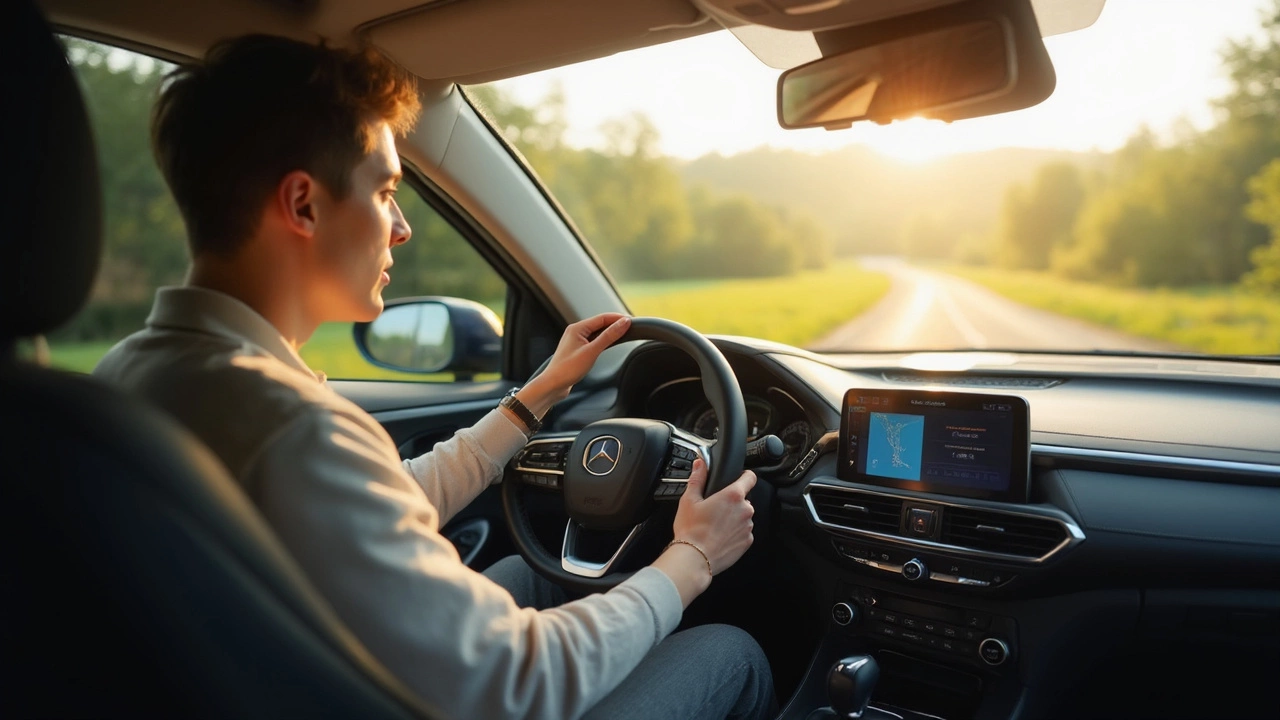Automatic Driving: What Every HGV Learner Needs to Know
If you’re studying for a Class 1 licence, you might wonder whether an automatic gearbox is right for you. The good news is that many modern HGVs come with automatic transmissions, and they can make long hauls feel a lot less tiring. In this guide we’ll break down the basics, point out the hidden risks, and give you simple steps to succeed on the road and the test.
Why Choose an Automatic HGV?
First off, automatic trucks take away the need to juggle clutch and gear‑shift pedals. That means you can keep both hands on the wheel more often, which improves focus on traffic and road signs. It also reduces wear on the clutch, so maintenance costs drop over time. For new drivers, the learning curve flattens – you spend less time worrying about gear changes and more time mastering steering, braking, and observation.
Many employers now prefer drivers who can handle automatics because they tend to be less fatigued on multi‑hour trips. The smoother acceleration also translates to better fuel efficiency in stop‑and‑go traffic, giving you a cheaper run‑cost overall.
Things to Watch Out For
Automatic isn’t a free pass. Some test centres still require you to demonstrate clutch control if you’re taking a manual‑only route, so check the specific requirements for your licence. Also, you’ll need to be comfortable with the vehicle’s “gear‑hold” function and know when to switch to low‑range for steep hills. Forgetting to engage the correct range can lead to overheating or loss of power.
Another mistake new drivers make is treating an automatic like a car. Heavy trucks have different braking distances, even though you don’t have to down‑shift manually. Always leave a longer gap and practice gentle, progressive braking. It’s also wise to keep an eye on the tachometer; even automatics have an optimal RPM range that protects the engine.
Practical Tips for Training and the Test
1. **Get familiar with the dashboard** – Know where the “P”, “R”, “N”, “D”, and any extra modes (like “S” for sport or “L” for low) sit. Move your hand over them before you start the engine so you won’t fumble when traffic demands a quick change.
2. **Practice hill starts** – Find a safe slope, set the vehicle in low‑range, and let the computer handle the clutch. Use the handbrake if needed, but learn the timing of releasing the brake while applying throttle.
3. **Focus on observation** – Since you’re not shifting, you have extra mental bandwidth. Use it to constantly scan mirrors, check blind spots, and anticipate other road users.
4. **Simulate test routes** – Drive the same roads the examiner will use, sticking to speed limits and practising maneuvers like reversing into a bay. Repetition builds confidence.
5. **Stay calm** – Automatic failures often come from panic, not the gearbox. Take deep breaths, remember you control the vehicle, and treat every stop as a chance to reset.
When the day of the test arrives, arrive early, do a quick walk‑around, and check that the gear selector is in “P”. During the exam, talk through your actions if the examiner asks – it shows you understand how the automatic works.
Bottom line: automatic HGVs can make learning smoother and driving less fatiguing, but you still need solid fundamentals. Master the vehicle’s controls, respect its braking distances, and practice the test routes. With those steps, you’ll feel ready to pass the licence test and hit the road with confidence.
- May 12 2025
- 0 Comments
- Rowan Cavendish
How to Start an Automatic Car: Beginner's Step-by-Step Guide
This article breaks down exactly how to start an automatic car, aimed at beginners who feel nervous or confused. You'll learn practical steps, common mistakes to avoid, and why these steps matter. Helpful tips will make your first try feel less intimidating. We'll include a few interesting facts to make it stick. Start your driving journey off right and get comfortable with the basics.
- April 13 2025
- 0 Comments
- Rowan Cavendish
How to Drive an Automatic Car: A Simple Guide
Getting behind the wheel of an automatic can be a breeze with the right guidance. This article breaks down the basics of driving an automatic car, highlighting key differences from manual transmission, tips for smooth transition, and safety essentials. Whether you're a complete novice or just making the switch, these insights will gear you up for the road.
- April 4 2025
- 0 Comments
- Rowan Cavendish
How to Start Driving an Automatic Car
Learning to drive an automatic car can be an exciting and less daunting experience than tackling a manual. This article explains the key steps for beginners to get comfortable with automatic driving. Readers will find tips on managing controls, understanding basic gears, and building confidence on the road. The piece aims to provide insights that make transitioning into the driver's seat smoother and more fun.
- Driving Lessons (41)
- HGV Training (31)
- Driving Test Tips (31)
- Driving Test Booking (26)
- Driving Licence Renewal (23)
- Driving Theory Test (21)
- Intensive Driving Course (16)
- Pass Plus Course (15)
- Driving Tips (15)
- Driver Licensing (14)
Categories
- December 2025 (13)
- November 2025 (13)
- October 2025 (21)
- September 2025 (5)
- August 2025 (8)
- July 2025 (30)
- June 2025 (30)
- May 2025 (30)
- April 2025 (31)
- March 2025 (30)
- February 2025 (28)
- January 2025 (34)
Archives
- driving lessons
- driving test
- driving tips
- intensive driving course
- driving test tips
- HGV training
- learn to drive
- driving theory test
- driver training
- driving test booking
- pass driving test
- HGV driving
- road safety
- driving license renewal
- Virginia driving test
- learner drivers
- safe driving
- Virginia driver's license
- driving license
- learning to drive



